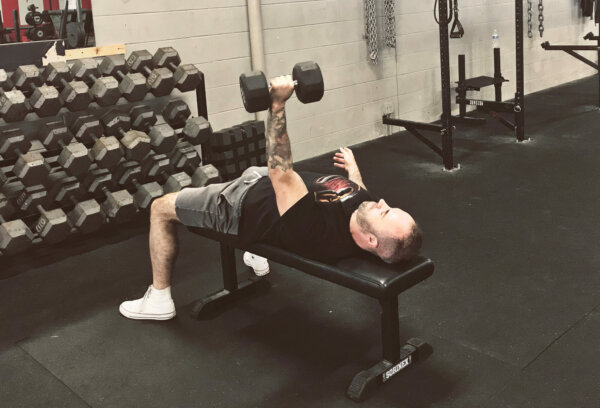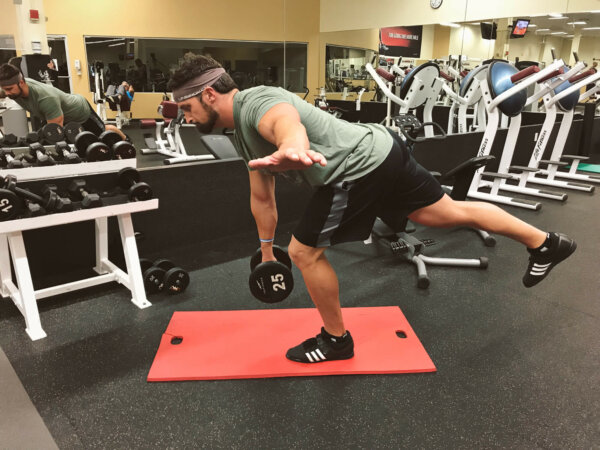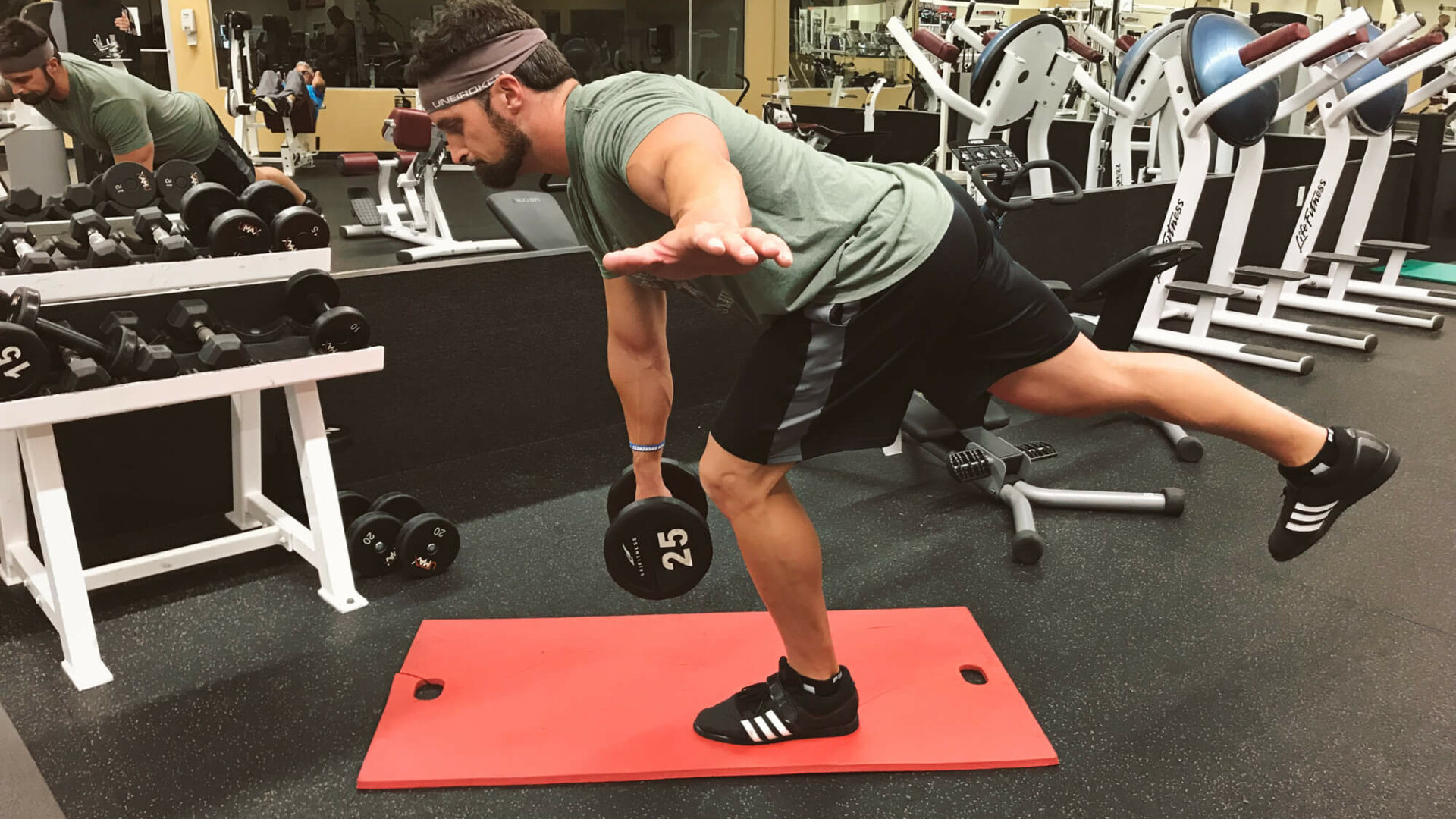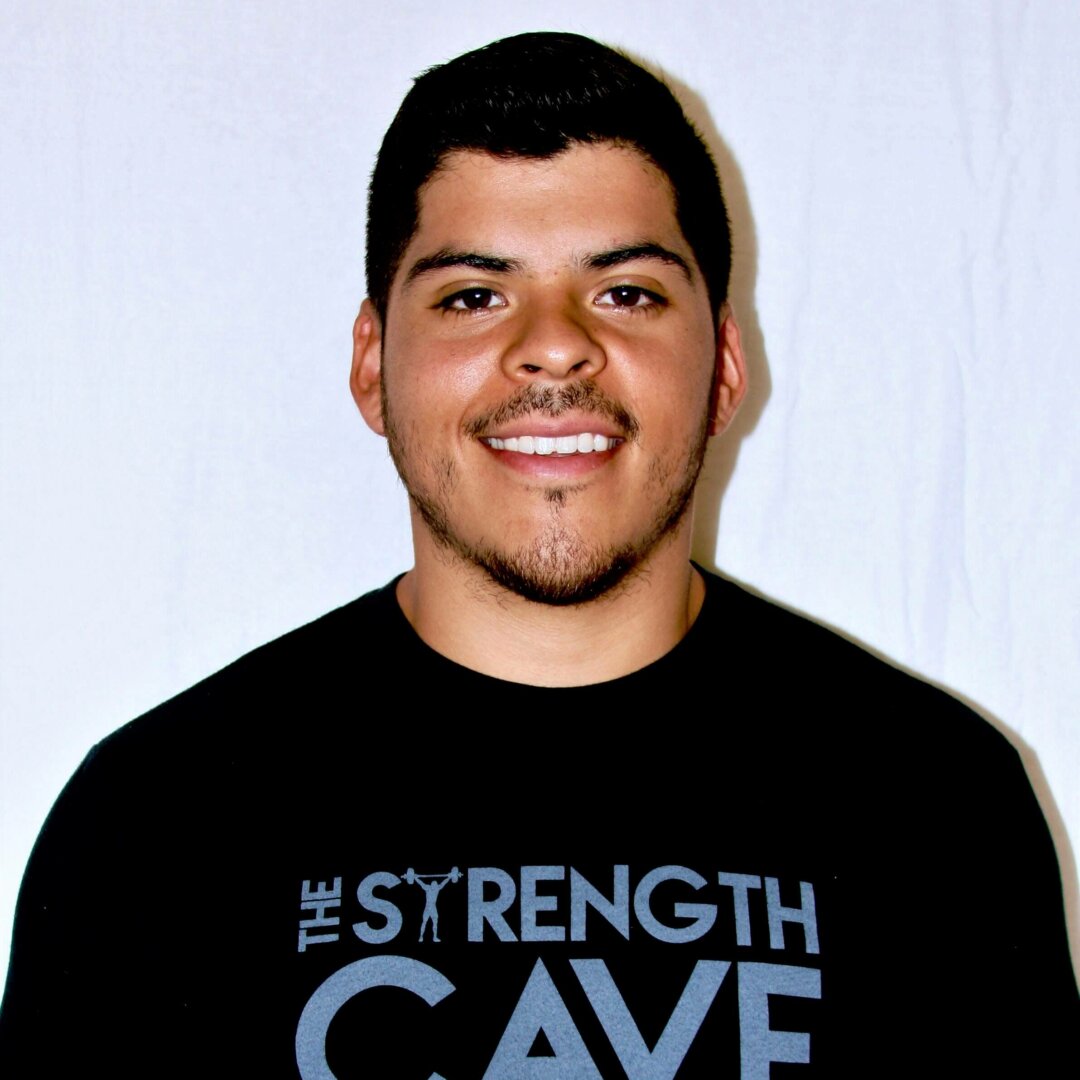If you take a look around the gym, you’ll notice that almost everyone is into performing major compound lifts these days. This is with good reason, since squats, presses, deadlifts, and rows are some of the best exercises you can do for overall muscular development. However, one thing you’ll notice is that everyone employs a bilateral strategy to their lifting. That is, they tend to perform a given lift with both legs/arms simultaneously. This is natural given the fact that we tend to mimic what we see in other people. Since most people perform bilateral compound movements in the gym and on social media, we simply follow suit.
But, every now and then you see someone doing a one-legged deadlift or a single arm dumbbell press. This is appropriately named unilateral training since you are only using one limb at a time to perform a movement. At first, you might think this is counterproductive since they are obviously using much less weight compared to the bilateral version. More weight equals more gains, right? Although that is generally true, there are other things to consider with unilateral training. Despite the use of lower absolute weight, there are some serious benefits to both strength and hypertrophy that come from unilateral training. In fact, including some unilateral work in your training program will likely make you a much better athlete overall.
Unilateral Work for Hypertrophy
If you’ve ever dipped your toe in the world of bodybuilding, you’ve most likely done at least a little bit of unilateral training. This probably came in the form of some sort of isolation exercise such as a concentration curl, lateral raise, or a behind-the-neck tricep extension. Overall, these are great exercises for maximally targeting each muscle individually.
The logic behind isolation exercises for hypertrophy reasons is pretty sound. You are focusing on maximally contracting one muscle at a time, which allows you to fully tax that muscle on either side of your body. This has long been known as the “mind-muscle” connection, which is thought to improve muscle hypertrophy [5]. Indeed, a recent study found that focusing attention on muscle contraction during each exercise produced greater muscle hypertrophy over 8 weeks [4].
So, there is definitely merit to unilateral training as it pertains to increasing muscle mass, but for some reason, people seem to shy away from performing unilateral work for compound movements that target larger muscle groups. In actuality, performing unilateral work on these big muscle groups will lead to the same improvements in muscle hypertrophy that we see in the smaller muscle groups. Leaving these kinds of unilateral exercises out of a training program ultimately means losing out on potential muscle hypertrophy.
You may notice that when you perform a bilateral exercise, one side performs slightly better than the other. Because of this, one side gets a better workout than the other, which can lead to some asymmetries in your physique. However, when you perform that same movement unilaterally, the discrepancy in eliminated. This leads to more total work being done by each side and can result in more hypertrophy over time. Not only that, but both sides will develop more evenly given the fact that the same effort is applied to each side. The result is a more muscular and symmetrical physique, which is something that I’m sure everyone would welcome with open (and big) arms.
Unilateral Work for Strength
First things first, there isn’t anything better for pure strength than putting as much weight as you can on the bar and lifting it. So, don’t get all worked up by thinking I’m going to say that unilateral work is better than bilateral work for pure strength. If you want to be a strong squatter, you have to squat heavy sometimes. If you want to be a strong deadlifter, you have to deadlift heavy sometimes, but the key word there is “sometimes.” In reality, most of your training is spent lifting submaximal weights. And hopefully, there is a fair amount of accessory work in your program. So, these submaximal efforts and accessory work slots are a perfect place to insert some unilateral training into your program. But how does unilateral work compare to bilateral work when it comes to more submaximal, accessory type work?
If you look up scientific studies that compare unilateral and bilateral training, you’ll find that most show comparable effects with respect to strength improvement [2][3]. Based on these results, it seems that the magnitude of strength improvement probably depends more on the load than the mechanics of the movement. On the surface, this might seem like clear evidence that bilateral training is better. More load equals more adaptation, but is this really the case?

In reality, this is where unilateral exercise actually has an advantage. Because only one limb is bearing the weight, the load on the bar only has to be about half as heavy as it would during the bilateral version. So, rather than your body bearing 300 pounds, it only has to bear 150 pounds. This will have a profoundly lower impact on your nervous system, which allows you to perform more work without getting as worn down. Over time, this results in better recovery, more volume, and most likely more strength adaptations.
Additionally, the lighter total weight that is being used is also less dangerous from an injury perspective. Injuries will absolutely rob you of any gains in strength you hope to receive from your training. Decreasing your risk of injury is never a bad thing.
These benefits might not translate well into a pure strength movement. For example, a one-legged back squat compared to a two legged back squat, or a one arm barbell bench press vs. a two arm barbell bench press. The coordination needed for those exercises limits the load that can be used. However, for accessory lifts such as a rear foot elevated split squat or an alternating dumbbell bench press, the benefits can be profound.
A word on Stability and Imbalances
Slight differences in strength between both sides of the body is normal, but sometimes people develop vastly different strength on one side of the body. This can seriously limit overall progression of a lift and rob someone of overall strength adaptations. Using unilateral exercise is a great way to correct imbalances. This works by the same principle that we discussed in the hypertrophy section. By isolating one side, your dominant side is unable to assist the lagging side in performing the exercise. Therefore, the lagging body part has no choice but to do its job in lifting the weight. This will help bridge the strength gap over time and help you progress further in your pure strength movements.

Additionally, pain and poor performance can sometimes be rooted in a stability issue around a certain joint. Unstable hips due to weak or underdeveloped glute muscles would be a good example. Forcing these stabilizers to become more efficient can be done easily with unilateral training. This isn’t to say that bilateral training can’t help in this respect. Both can be used to teach proper motor patterns [1][2]. However, in practice, I have found unilateral training to be more effective in getting people to really connect with and activate the correct musculature that is causing the issue.
Conclusion
This article isn’t an attack on anyone who prefers to train with the traditional bilateral movements. Those movements are absolutely great to use as the foundation for any good training program. Additionally, the bilateral exercises are usually easier to learn and more appropriate for beginners. However, if you’ve got some experience and you want to optimize your training, unilateral work is great.
These movements will not only introduce some variety to your training plan, but they will also likely translate into more hypertrophy and strength gains in the long run. Pair this with a lower injury risk and the benefits to fixing/preventing imbalances, and you’ve got a pretty robust tool. The trick lies in how you apply unilateral training. If it”s hypertrophy you want, make sure you stress that mind muscle connection in your unilateral lifts. If your goal is maximal strength, make sure you find a way to mimic heavier, bilateral training with your unilateral lifts. Either goal can be accomplished efficiently through unilateral training with smart programming and proper execution.
For more on unilateral training checkout Peter Baker’s article Unilateral Training: Your Least Favorite Workout Partner
References
- Dragert K, Zehr EP. Bilateral neuromuscular plasticity from unilateral training of the ankle dorsiflexors. Experimental brain research. 2011 Jan 1;208(2):217-27.
- Häkkinen K, Kallinen M, Linnamo V, PASTINEN UM, Newton RU, Kraemer WJ. Neuromuscular adaptations during bilateral versus unilateral strength training in middle‐aged and elderly men and women. Acta Physiologica. 1996 Aug 1;158(1):77-88.
- McCurdy KW, Langford GA, Doscher MW, Wiley LP, Mallard KG. The effects of short-term unilateral and bilateral lower-body resistance training on measures of strength and power. Journal of Strength and Conditioning Research. 2005 Feb 1;19(1):9.
- Schoenfeld BJ, Vigotsky A, Contreras B, Golden S, Alto A, Larson R, Winkelman N, Paoli A. Differential effects of attentional focus strategies during long-term resistance training. European journal of sport science. 2018 Mar 13:1-8.
- Schoenfeld, B.J. and Contreras, B., 2016. Attentional focus for maximizing muscle development: The mind-muscle connection. Strength & Conditioning Journal, 38(1), pp.27-29.

